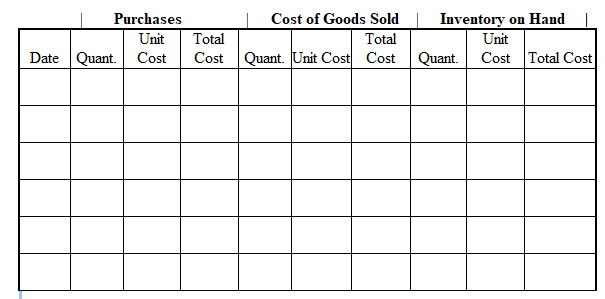Indicate whether each of the following statements is true or false. (Assume a perpetual inventory system)_____ a) The purchase of merchandise inventory is recorded as an expense._____ b) Merchandise inventory is expensed in the period it is sold._____ c) Merchandise Inventory is an account appearing on the balance sheet._____ d) Cost of goods available for sale is allotted between cost of goods sold and selling expenses._____ e) Cost of goods sold is a part of administrative and selling expenses.
What will be an ideal response?
a) This is false. The purchase of merchandise inventory is recorded as an asset exchange transaction.
b) This is true. Merchandise inventory is expensed when it is sold, and is reported on the income statement as cost of goods sold.
c) This is true. Merchandise inventory is an asset account that is reported on the balance sheet.
d) This is false. Cost of goods available for sale is made up of cost of goods sold and ending merchandise inventory, not selling expenses.
e) This is false. Cost of goods sold is an expense separate from selling and administrative expenses.
You might also like to view...
Designer Furniture began June with merchandise inventory of 45 sofas that cost a total of $31,500. During the month, Designer Furniture purchased and sold merchandise on account as follows:

Prepare a perpetual inventory record, using the LIFO inventory costing method, and determine the company's cost of goods sold, ending merchandise inventory, and gross profit.

Claire has just told her best friend, "I'm so glad I bought the Samsung Galaxy S5 rather than those other smartphones I was considering. Look at this incredible display, and the battery stays charged forever." Which stage of the consumer purchase decision process does Claire's conversation identify?
A. problem recognition B. alternative evaluation C. information search D. purchase decision E. postpurchase behavior
A net loss results in a decrease in
A) revenues. B) expenses. C) stockholders' equity. D) liabilities.
Property voluntarily placed by its owner with no intention of reclaiming it is mislaid property.
Answer the following statement true (T) or false (F)